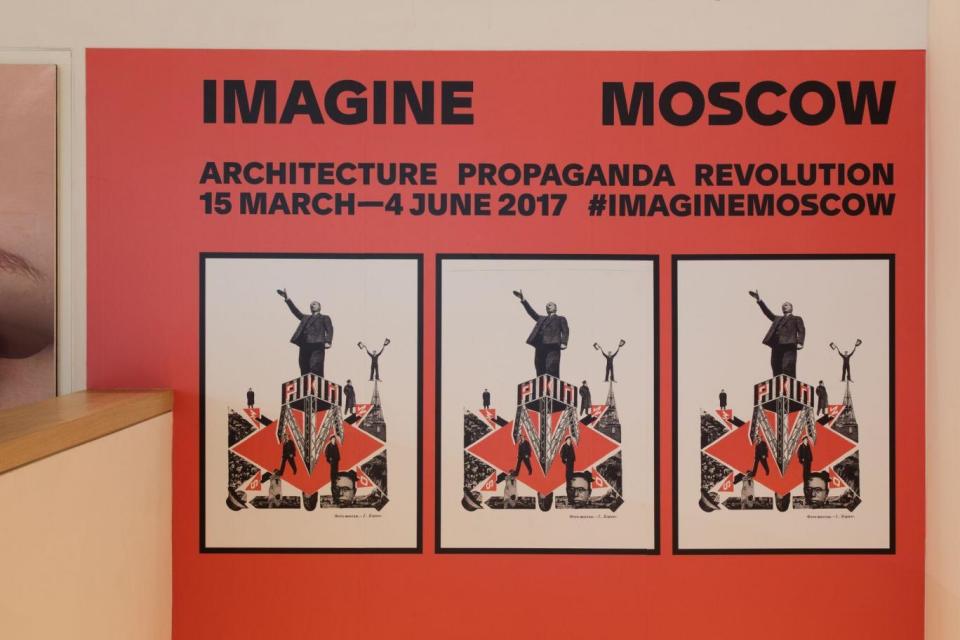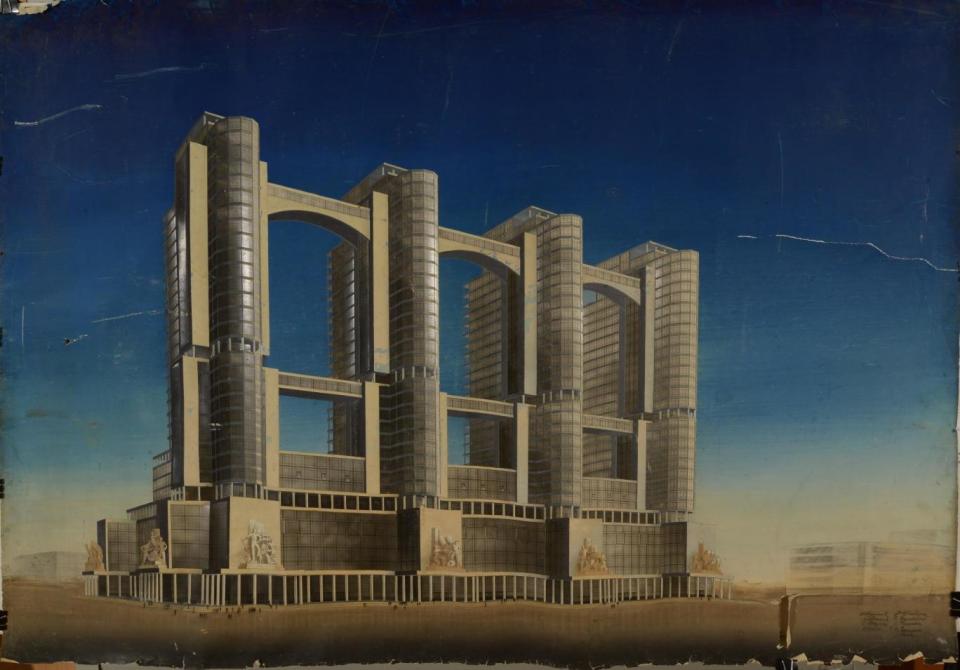Imagine Moscow at the Design Museum: How humanity scaled down its ambitions

Vladimir Lenin’s four metre high index finger dominates the entrance hall of Imagine Moscow. Its presence gives a sense of just how big the statue it was intended for would have been; perched atop a never-built mega-skyscraper, the Palace of the Soviets.
Moscow’s authorities got as far as dynamiting the city’s Cathedral of Christ the Saviour to make room for the Palace, but the plan was wisely abandoned in 1941 so the steel earmarked for it could be used to fight the Nazis.

The demolished Cathedral was eventually rebuilt in 2000 – though if my visit to the city last year is anything to go by it is better known to young Moscovites as “the Pussy Riot church” after the punk band arrested for performing there in 2012.
Imagine Moscow dusts off the designs and architecture of the early Soviet Union, the most radical of which only ever existed on paper. For this exhibition we descend into the bowels of the Design Museum’s new building, into a dark space that seems to get bigger the more it is explored.

If a common thread runs through the exhibition it is how the ideology of a society – in this case the USSR – dictates what and how it designs. A section on workers’ literacy drives shows pro-reading propaganda posters ('Citizens, listen and take notice that there is a library in every train dining car') and schematics for mobile libraries to be sent out into the countryside.
One communal home whose plans are on display was designed specifically to stamp out the nuclear family unit. A goal never fully realised in the USSR, I can report that London’s hyper-capitalist rental market is doing the job without breaking a sweat by forcing everyone into shared flats through sheer expense.
If a criticism could be levelled at Imagine Moscow it would be that its title should be taken literally: in some sections you are a presented with little more than very early concept sketches of a project, and you will have to do a lot of imagining to get the most out of it. It would have been nice to see a few more reconstructions or models, but the exhibit is overall a fascinating piece of social history with more than a few lessons for the architects and designers of today. It’s hard to leave without thinking humanity has scaled down its ambitions.
Imagine Moscow runs until 4 June at the Design Museum in London. Full price £10, concessions £7.50


